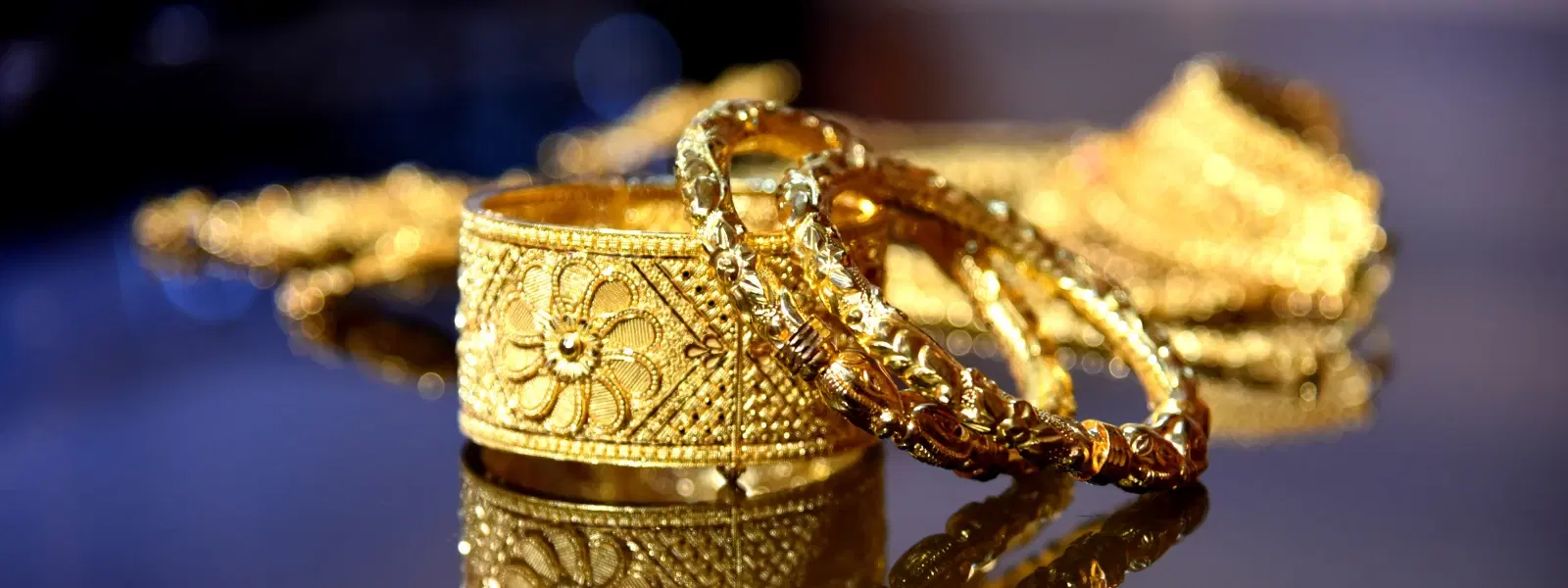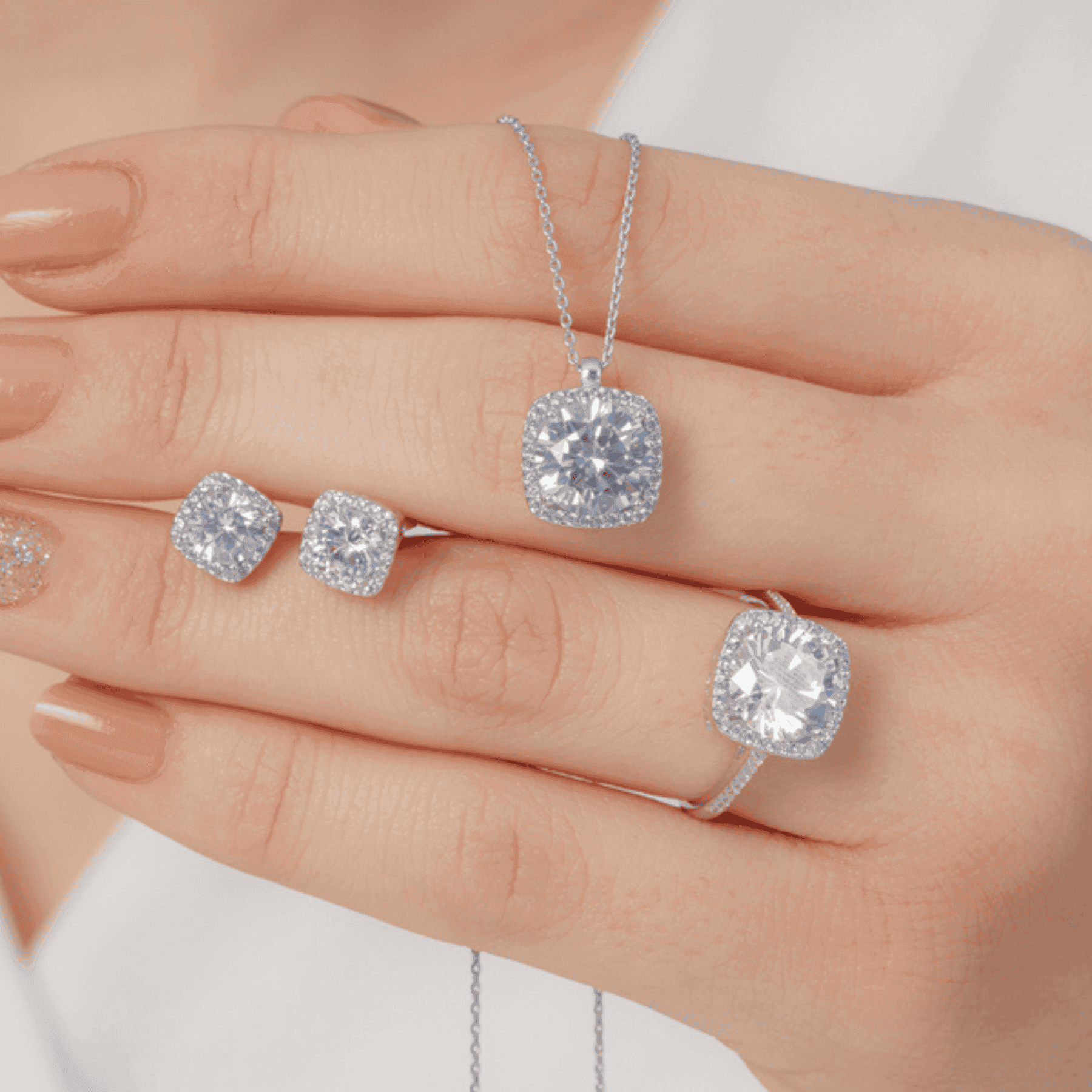
Watches & Jewellery
•04 min read

Gold remains one of the most highly sought after elements in jewelry. Its elegance, lasting beauty, and inherent value have kept it in the spotlight for centuries. However, gold purity explained can sometimes seem like a maze. This guide simplifies the art of assessing jewelry gold standards. Here, you will learn about karat systems, gold alloy types, methods to test gold purity, and effective gold quality comparison techniques, making your next purchase an informed one.
Gold purity explained is all about understanding the proportion of pure gold in a jewelry piece. The karat system is the most common way to measure this. Pure gold is rated at 24K, meaning it contains 100% gold, though its softness makes it less practical for everyday use. This has led to the creation of various gold alloys for enhanced durability and unique color variations. Recognizing the difference between 24K gold and other karats like 22K, 18K, and 14K is essential to ensuring you pick the right piece for your lifestyle.
Gold purity refers to the percentage of actual gold present in your jewelry. Here are a few points to consider:
24K Gold: This is 100% pure gold. Although known for its rich hue, it is soft and delicate.
22K Gold: Consists of approximately 91.67% gold. It is popular in traditional jewelry due to its robust yet pure appearance.
18K Gold: Contains 75% gold. It is widely chosen for fine jewelry and luxury watches, striking a perfect balance between purity and durability.
14K Gold: Consists of 58.3% gold. This alloy is durable and affordable, making it a great option for everyday wear.
When picking your next piece, consider that 18K gold is often favored for its blend of a rich visual appeal and lasting strength, making it ideal for both gem settings and watches. In contrast, 14K gold offers a resilient option for daily accessories while still preserving a stylish look. Each karat option has its own allure, and your choice will reflect your style, identity, and usage needs.
Gold alloy types are crafted by mixing pure gold with other metals. This process not only reinforces the jewelry but also results in exciting variations in color. A good understanding of these differences helps you choose the best gold for watches and other jewelry pieces that complement your fashion identity and everyday style.
Different alloys bring distinct benefits and aesthetics to your favorite pieces. Consider these options:

Yellow Gold: A timeless blend achieved by mixing gold with copper and silver. Its warm tone is ideal for those who favor traditional looks.
White Gold: Created by mixing gold with palladium or nickel, often finished with a rhodium coating for a brilliant shine, making it perfect for modern designs.
Rose Gold: Made unique by the addition of copper, this alloy offers a soft pink hue, making it a trendy choice for personalized pieces.
Green Gold: Less common but intriguing, made by combining gold with silver and cadmium to produce a distinctive light green tint.
The beauty of gold lies in its color variations. Yellow gold exudes tradition, while white gold is cherished for its contemporary appeal. Rose gold has risen in popularity for its romantic and fashionable vibe. These color variations provide versatile options that cater to varied tastes and occasions, making every jewelry piece as unique as its wearer.
Ensuring that your jewelry meets the desired standards prevents any worries about authenticity. There are several practical methods for testing and verifying gold purity. Knowledge about how to test gold purity not only saves you from potential fraud but also ensures your investment stands the test of time.
The following methods offer a starting point:
Magnet Test: Real gold is non-magnetic. If your piece reacts to a magnet, it may have a lower gold content.
Acid Test: A small drop of nitric acid can help determine the purity based on the reaction from the gold piece. Use this test carefully and preferably under professional guidance.
Weight and Density Check: Gold is denser than most alloys, and comparing weight can provide additional clues regarding authenticity.
Always look for hallmark stamps that indicate karat and purity. These certifications, whether from recognized national bodies or international standards, play an essential role in ensuring jewelry authenticity. Trusted certifications and certificates of authenticity help you compare jewelry gold standards and make a confident buying decision.
Pro Tip: Understanding Gold Grades Can Save You Thousands
Choosing between 14K and 18K gold for daily wear is wise. However, when it comes to investment pieces, 22K or even 24K gold might be the right choice, ensuring maximum value retention while matching your distinct style.

A comprehensive gold purity checklist covers various aspects, ensuring you never miss any detail while selecting jewelry. The process includes understanding the difference between 14K and 18K gold, comparing gold alloys, and knowing the right standards for high-end jewelry and watches. This checklist serves as your stylish friend, guiding you through each feature that defines authenticity and overall quality.
When considering watches, 14K gold offers durability and a practical appeal for everyday use. In contrast, 18K gold provides a luxurious feel with higher gold content, perfect for premium watch designs that make a statement. Knowing the difference between 14K and 18K gold can help you decide based on your lifestyle and usage frequency.
For those seeking refined elegance, 18K yellow gold remains a top pick due to its rich, luxurious appearance. Modern design aficionados might opt for white gold for its sleekness, or rose gold for a touch of contemporary flair. Gold quality comparison along with certifications ensures that every piece you choose shines with authenticity and durability.
750 gold (18K) is better for jewelry due to its higher purity and durability compared to 585 gold (14K).
18K gold is best for everyday jewelry, while 22K or 24K gold is ideal for investment pieces or traditional designs.
24K gold is purer but softer, making it less suitable for everyday jewelry. In contrast, 9K gold, while more durable, has a lower gold content.
This gold purity checklist has unraveled the mysteries of karat systems, alloy types, and testing methods, encouraging you to make informed jewelry purchases. With clear insights on how to test gold purity, verify gold certifications, and compare gold quality, you can confidently select pieces that not only match your personal style but also stand the test of time. Embrace the art of thoughtful purchasing and let your jewelry reflect your unique identity and taste.